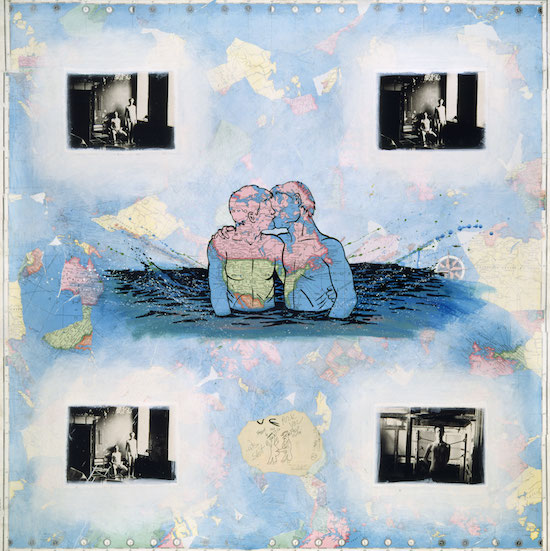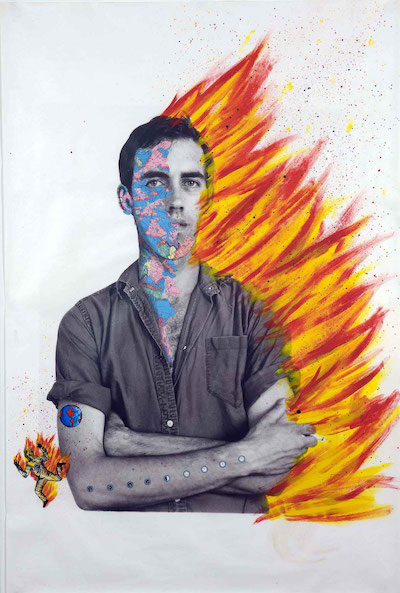Film: Ecstasy, Art & Death

Êxtase (Ecstasy), a beautiful, unsettling pseudo-documentary from Brazilian filmmaker Moara Passoni, is the semi-autobiographical story of a young woman with anorexia, set in the tumultuous political climate of 1990s Brazil. Eating disorders are often a young person’s extreme method of exerting control over her life, and young protagonist Clara is no exception. She traces the origins of her sensitive psyche to a photo of her activist mother standing up to police during a protest, her pregnant body flooded with adrenaline. As Clara notes when her mother is elected to Congress at a time when politicians were often physically attacked, “As long as I kept an eye on my mom, nothing would happen to her.” The wary girl finds not only control, but ecstasy through starvation.
The film’s narrative is just part of the experience of Êxtase, an inventive, impressionistic work that casts its strange spell using photo stills, old news footage, beautifully framed reenactments, and sound designer Cécile Chagnaud’s dramatic, disquieting soundtrack. The latter, which includes Ismael Pinkler’s original score and a collaboration by David Lynch and Lykke Li, is full of classical music snippets, animal sounds, strange mechanical noises and a lot of whispering. Scenes are narrated by Clara as both child and adolescent.

She describes her family’s move to the country’s federal capital, Brasilia, its sleek, modern architecture adding to her culture shock. There are several close-ups of her classmates (often whispering conspiratorially) at a Catholic school, where Clara is transferred to another class after kissing a girl. She’s enrolled in ballet class, where sun-drenched scenes of legs and feet uniformly stretching and pointing suggest a kind of aspirational purity. Clara soon finds a religious fervor in abstinence from eating, categorizing food very specifically in a “secret” notebook. She becomes emaciated and begins to hallucinate; during a class visit to an anatomy museum, she imagines her body as “a cage of bones keeping my heart inside me.”
Her collection of photos of horrifically skeletal young women is juxtaposed with images of actual skeletons and death. Doctors warn her that she will die if she doesn’t eat, but she continues to pursue “a light absolute state,” at one point surgically paring down a piece of birthday cake for 40 minutes until it is weightless enough to put into her body. As we see in the film’s rather uplifting conclusion, she eventually comes to a decision about the direction of her life.
Êxtase is available through MoMA’s Virtual Cinema from March 28 through April 2.

Estate of David Wojnarowicz. Courtesy of the Estate and P.P.O.W Gallery
Currently available to stream through Kino Marquee virtual cinemas is Chris McKim’s immersive portrait of pioneering queer artist David Wojnarowicz, Wojnarowicz: F**k You F*ggot F**ker (the title of one of his best-known works). Using the artist’s own written and audio journals, along with interviews, still photos and video footage, McKim not only shows us Wojnarowicz’s short, turbulent life and groundbreaking work, but captures the sights, sounds and energy of the 1980s art scene in New York, along with the accompanying horror of the emerging AIDS epidemic.
After a traumatic childhood with an abusive, alcoholic father, Wojnarowicz moved to Hell’s Kitchen with his mother at age 11. This rough start fueled him with a restless anger that would shape his life and his work. A major life-changing event was meeting photographer Peter Hujar, who became a close friend and working partner.
Interview clips with leading lights of the day including filmmaker Richard Kern, art critic Carlo McCormick, writer/humorist Fran Lebowitz, and art dealer/gallerist Gracie Mansion add great detail about Wojnarowicz and the downtown art/music scene. As if he knew his days were numbered, the astoundingly prolific artist was constantly creating, commenting on life and the world, whether it be through music, essays, stencil graffiti, or emotionally charged paintings and photographs that harnessed the anger and outrage of the Reagan years.

Though his artworks were first shown at East Village pop-up galleries, Wojnarowicz was eventually embraced by the art world establishment he disdained, landing two pieces in the 1985 Whitney Biennial and creating an installation for collectors Robert and Elaine Mnuchin (parents of Steve).
Hujar was the first in his group to contract AIDS, and Wojnarowicz soon followed. Through video footage, McKim reminds us of the various protests and demonstrations that accompanied the deaths of so many, as ACT Up and other AIDS-battling groups demanded healthcare and funding. Attacked by politicians and other figures for his art’s blasphemy and obscenity, Wojnarowicz kept raging and working until succumbing to the virus at age 37. The chaotic energy of his life and times is made palpable through a film that is both celebratory and haunting.
Watch Wojnarowicz: F**k You F*ggot F**ker through Kino Marquee Virtual Cinema.
— Marina Zogbi

